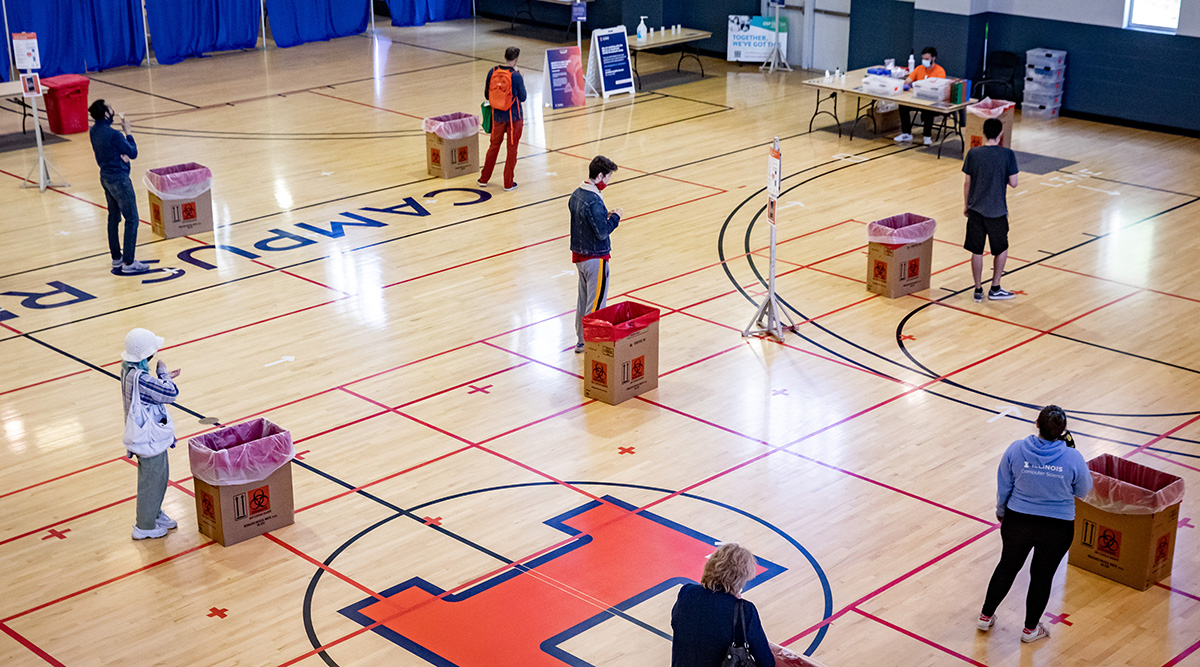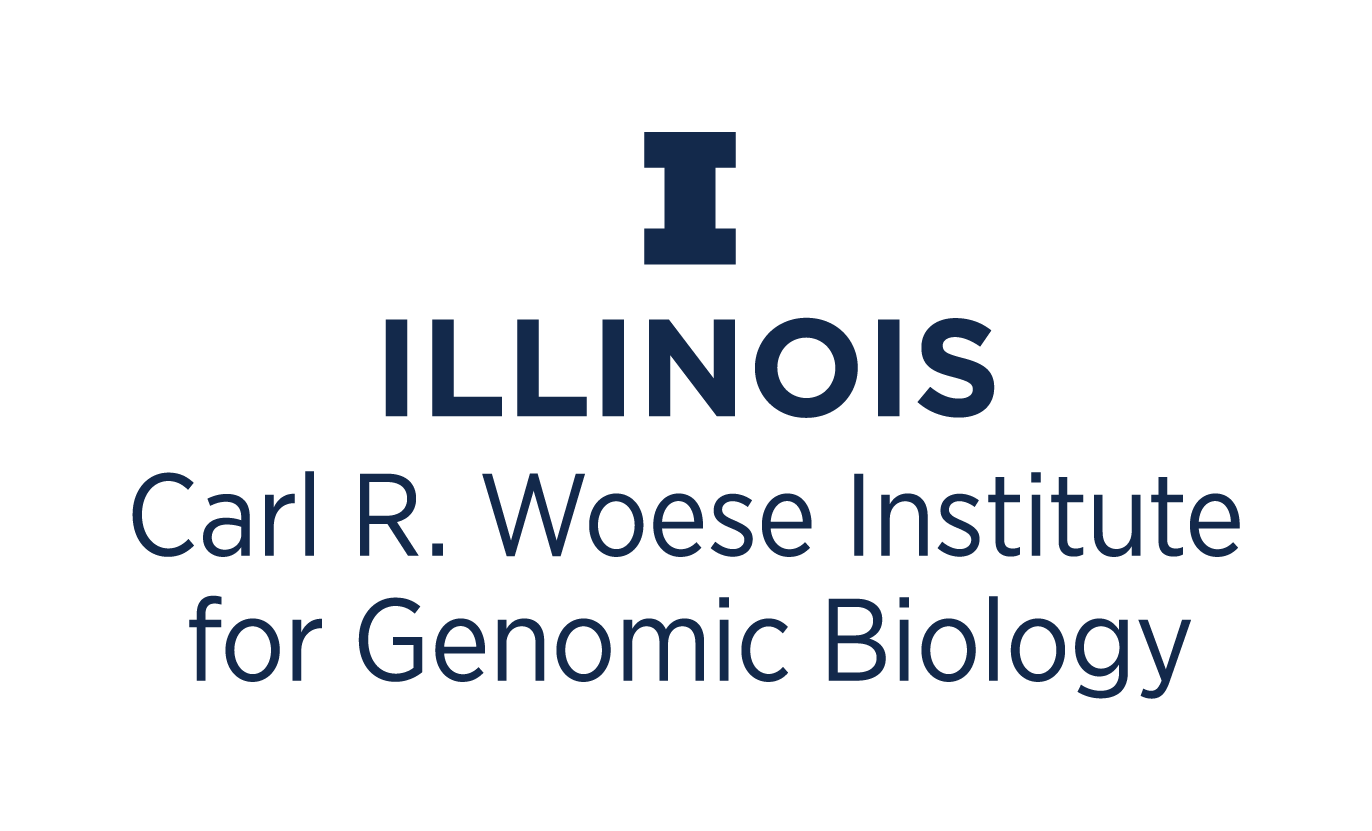By: Ananya Sen
During the earliest months of 2020, COVID-19 seemed like an innocuous event that was too geographically distant to affect the Illinois community. In fact, by March 10th there were only 19 confirmed cases. Nevertheless, Nigel Goldenfeld (BCXT leader/GNDP), former Swanlund Endowed Chair and professor of physics, and Sergei Maslov (BCXT/CABBI), a professor of bioengineering and Bliss Faculty Scholar, were worried. The news from China and Italy was concerning and in four days a significant portion of students, faculty, and staff were going to leave for spring break. They decided to build a simple mathematical model of Urbana and Champaign to predict what would happened to the community.

Goldenfeld and Maslov divided the population into four categories: susceptible, exposed, infected, and recovered. They were stunned by the results. The model predicted that if the students were allowed to return to campus, there would be a huge wave of infections. They immediately contacted the university provost and on March 11th the students were told that their classes would be online after spring break. The model also convinced Governor J.B. Pritzker to issue a statewide stay-at-home order. The decision helped Illinois avoid the situation in New York, which implemented the same order a day later, at which point it had ten times as many confirmed cases.
The model was just the first of many steps that were taken to protect the Illinois community from the devastating spread of COVID-19. The second was implementing SHIELD Illinois—a COVID-19 testing program designed to safely open schools, protect workplaces, and save lives. The developers came up with the name to evoke the concept of putting a protective shield around the University of Illinois campus. The team included experts in modeling, which emphasized the importance of regular testing; biochemistry and immunology experts who helped develop the saliva test, and community members who worked with the Illinois Department of Public Health and the CU Public Health District to develop safety guidelines.
The saliva-based testing procedure is simple, non-invasive and, most importantly, the results are available within 24 hours. The test targets three highly conserved regions of the viral genome and can pick up the virus as early as two to three days after exposure, making testing extremely accurate and reliable, regardless of variants.
The saliva test has been coupled with a digital app to establish a rapid-alert system where the individuals are directly notified within 30 minutes if they have tested positive, ensuring that they immediately isolate and reduce any spread of infection. Additionally, the supercomputing resources at the university was used to create real-time models to quickly identify and contain emerging outbreaks before they got out of control.
During the fall 2020 semester, the university conducted about 10,000 tests each weekday and half that number during the weekends. “At the beginning of the semester, we worked 12-hour shifts to make sure everything was running smoothly,” said Diana Ranoa, an IGB fellow who was instrumental in developing the saliva test. “The volume of samples we had to process was overwhelming and our team grew from four people to about forty, all working around the clock.” Due to the rapid system, along with universal masking on campus, small in-person class sizes, and the availability of remote learning, the case positivity rate was usually well below 0.5% with zero COVID-19-related hospitalizations or death in the university community.
By December 2020, the university had administered one million tests, a milestone and a reflection of the creative spirit and tireless collaborations across the campus. “The SHIELD team made many innovations in a very short period of time that allowed to achieve fast, frequent testing that defends against COVID-19 transmission,” said Martin Burke (MMG), a professor of chemistry and the leader of the SHIELD team. “At Illinois we love to innovate and we love working together. Failure was not an option and our entire campus rallied together to succeed.”
The SHIELD team also developed a new resource—the K-12 Shield Playbook—to help guide teachers and school administrators as they reopened schools during the pandemic. It contains modules on cleaning, distancing, health data, masking, testing, and ventilation. “The K-12 Playbook provides all of the resources that a school would need in one place,” said Rebecca Smith (IGOH), a professor of pathobiology. “There are a lot of resources out there, but they’re scattered. We brought it all together as a resource repository for schools, with a guide to making all the decisions necessary to reopen a K-12 school.”
In recognition of SHIELD’s efforts, Tim Killeen, the President of the University of Illinois, honored 28 key leaders of the system’s COVID-19 response with the Presidential Medallion in August 2021. The IGB recipients included Nigel Goldenfeld; Sergei Maslov; Diana Ranoa; Martin Burke; Rebecca Smith; Fadi Alnaji, a post-doctoral researcher; Christopher Brooke (IGOH), associate professor of microbiology; Timothy Fan (ACPP/CGD), a professor of veterinary clinical medicine; Kelsie Green, a laboratory technician; and Paul Hergenrother (ACPP leader/MMG), Kenneth L. Rinehart Jr. Endowed Chair in natural products chemistry.
“In our fight against COVID-19, the efforts of the University of Illinois System have been a real asset to millions of Illinoisans,” Pritzker said at the ceremony. “That begins with the successful effort last year to keep campuses open to the more than 90,000 students enrolled at U of I System universities. But it extends to the tens of thousands of people who found access to life-saving vaccines in the Chicago area, students at universities and community colleges who have been protected by the SHIELD test, and this Fall to students at more than 1,000 K-12 schools around the state who will be protected by access to SHIELD.”
By: Ananya Sen
Photos By: Fred Zwicky



